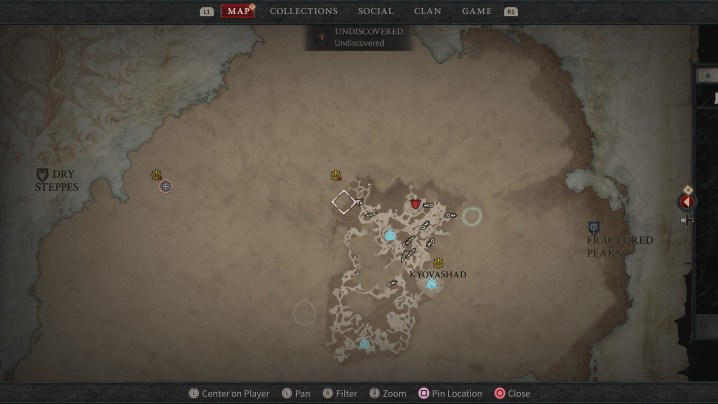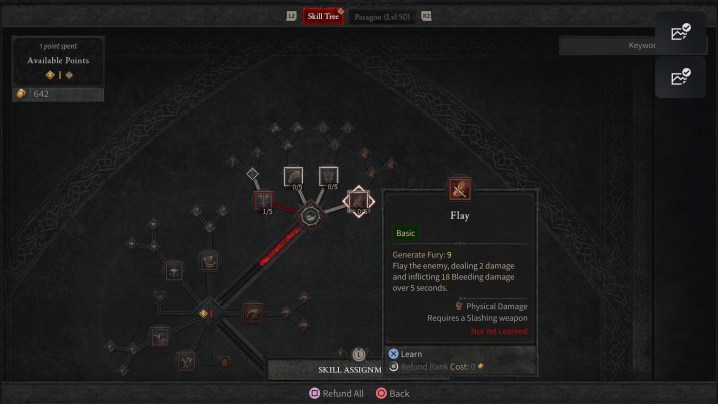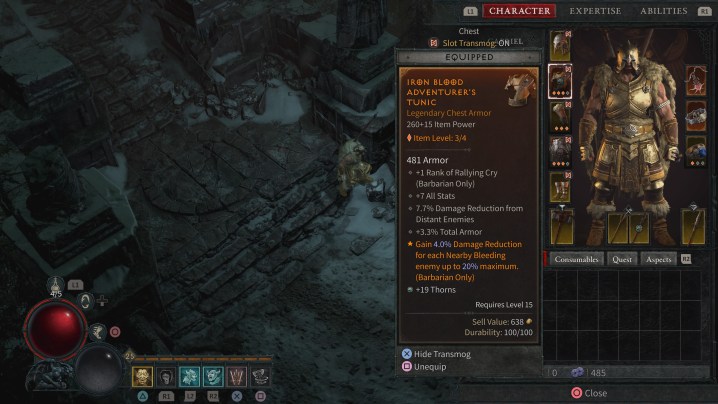
The always-online Diablo IV is right around the corner. I had an enjoyable time exploring the setting of Act 1, the eerie Fractured Peaks zone that’s heavily inspired by northeastern Europe, while going hands-on with the game’s open beta. It all worked well when the servers didn’t completely break down, forcing me to wait in a queue. Its always-online sensibilities are definitely a bold move for the series – which has traditionally fashioned itself as an action RPG with both offline and online features.
Once expected beta server issues were resolved, I got some insight into how this massive beast of an online role-playing game will likely function when the servers finally go live in June. I still agree with the healthy room for concern outlined in Digital Trends’ previous Diablo IV preview, but Diablo IV is as challenging and grounded as Diablo 2 and as dynamic and speedy as Diablo 3. A captivating story that goes heavier on its own themes than past installments gives a strong reason for its sprawling open world, and its hefty combat offers a balanced mix of challenge and brain-tingling action that drew me in.
I’m still not entirely sold on its always-online nature, though, as I did not like some of the concessions made to keep it balanced for persistent multiplayer.

Who let the demons out?
The beta kicked off with a cinematic opening that introduced the new villain, Lilith, who isn’t really siding with Heaven or Hell and is more interested in messing with the human-inhabited in-between world of Sanctuary for her own ends. The opening scenes present a far more gruesome image of Diablo’s world, definitely aligning with what one would expect as a modern progression from Diablo 2, and I enjoyed how it characterizes its main players early on.
Lilith and the angel Inarius are two sides of the same coin, as they created the Nephalem from the previous games and the setting of the series together, but haven’t exactly agreed on one another’s methods since then. These two characters were part of Diablo lore since Diablo 2, so it is cool to finally see their stories explored in detail, though I obviously didn’t see the complete story in just Act 1.
Diablo IV is a five-act game spread across just as many open-world zones, and I found that the Fractured Peaks alone has about 25 or so hours of content in the form of sidequests, dungeons, points of interest, strongholds, and the main story quests. And once I got into it all, it was tough to pull myself away. There was always another dungeon to run to or a shiny new piece of gear to find. Without even trying to follow any specific quests, I found myself purging the village of Nostrava and helping a priest solve a curse that’s been causing her neighbors to become possessed by a notorious demon. If you pick a direction and run, you’ll always find something to do, and Diablo IV’s core loops are extremely tight in this regard.

I played a Barbarian to level 25 and tried out a bit of gameplay with the dagger and bow-wielding Rogue and the magic-wielding Sorcerer, and they all felt very different in practice. There’s a proper skill tree for each class instead of a tab where I could just assign a bunch of attacks and passive moves. This skill tree strikes a balance between complexity and accessibility, giving me an increasing number of branching skill lines as I continued building out my character. The best part was that I could respec at any moment if I didn’t like my current setup, giving me plenty of room to experiment.
Skills are assigned into different categories that unlocked as I leveled up and allocated more skill points into my build. For example, the Barbarian’s skills are divided into Basic Skills, Core Skills, Defensive Skills, Brawling Skills, Weapon Mastery Skills, Ultimate Skills, and Key Passive skills, with those for other classes being different. I found it enjoyable to play with my skill points and try different builds with very different skills, especially since each of these categories contained vastly different types of abilities and passive boosts I could place points into at my own discretion.

Gearing for destruction
I was delighted to find that, like in Diablo 2, looted equipment can give randomized bonuses. These ranged from random combat stat boosts to unlocking new skills in my skill tree, but its itemization doesn’t manage to be quite as intricate as I’d hoped. No longer will I find equipment that gives me entirely unique effects, like making my sword shoot lightning bolts when I take a hit. Disappointingly, I can’t just use any weapon as any class anymore either. Still, a new piece of gear in Diablo IV does make me feel more powerful, especially when I apply one of the new Aspects that can instantly turn a regular piece of loot Legendary with a specific effect.
Loot also seemed to be instanced between each player in the multiplayer overworld, so it never felt like I was stepping on anyone’s toes when mindlessly grabbing all the loot after beating a public world event alongside a few other random players. If I wanted to play entirely alone, I could dip into a dungeon that is both instanced and procedurally generated for just myself and my party. It’s convenient then that Diablo IV even has a button to manually reset each dungeon on the map if I felt like running the same dungeons more than once.
However, the multiplayer interactions felt sparse overall, and there isn’t too much of a compulsion to go and play with other people – since virtually everything I experienced, including stronghold missions (like the aforementioned Nostrava adventure), could be completed entirely by myself. Thanks to a dodge roll button and a reserve of healing potions that are both preciously needed to keep me alive still generously reupped by defeating enemies or beating down a boss’s health bar, I maintain enough survivability to not need anyone else to help me out.
I’m aware of a world boss that shows up and attacks a server – requiring the cooperation of multiple players to defeat it – but it never appeared for me during my playthrough, leaving me feeling a bit middling on the multiplayer elements.

There’s a clan system and other social chatroom elements here too, just like in the Battle.net days of yore, but I don’t know if that’s enough to tie Diablo IV’s persistent multiplayer together – since it doesn’t seem like there are any large-scale projects or raids that make it worthwhile or even possible to have all 150 members in the same place at once.
It would be disappointing to go through all this effort to make Diablo IV an MMORPG without including enough content that promotes collaboration between its players, whether in the open world or in dungeons. It’s also really disappointing that Diablo IV opts for a level-scaling system that puts me basically on par with every other character on the server, just like in The Elder Scrolls Online. After spending enough time at the level cap, I genuinely felt like I was spinning my wheels by the end, with little to show for my progression other than having unlocked a full bar of abilities.
Whether or not Activision Blizzard will support and grow Diablo IV’s multiplayer features or prefer to exploit its always-online nature to mostly sling cosmetic microtransactions — as well as whether its endgame is any good over the years after its release — is more likely to determine the fate of this gargantuan beast of an RPG than the product we get at launch. Still, the world and characters are interesting and its classes are fun to play and experiment with, so I’m still mostly looking forward to its final release – with just a healthy amount of caution.
Diablo IV will release on June 6 for the PlayStation 5, Xbox Series S and X, and Windows.
Editors’ Recommendations
-
Minecraft Legends: Release date, trailers, gameplay, and more -
Don’t start the Resident Evil 4 remake before playing these 5 games -
5 features we’d need from a PS5 Pro to justify an upgrade -
Exoprimal: release date, trailers, gameplay, and more -
Pikmin 4: release date, trailers, news, gameplay, and more


